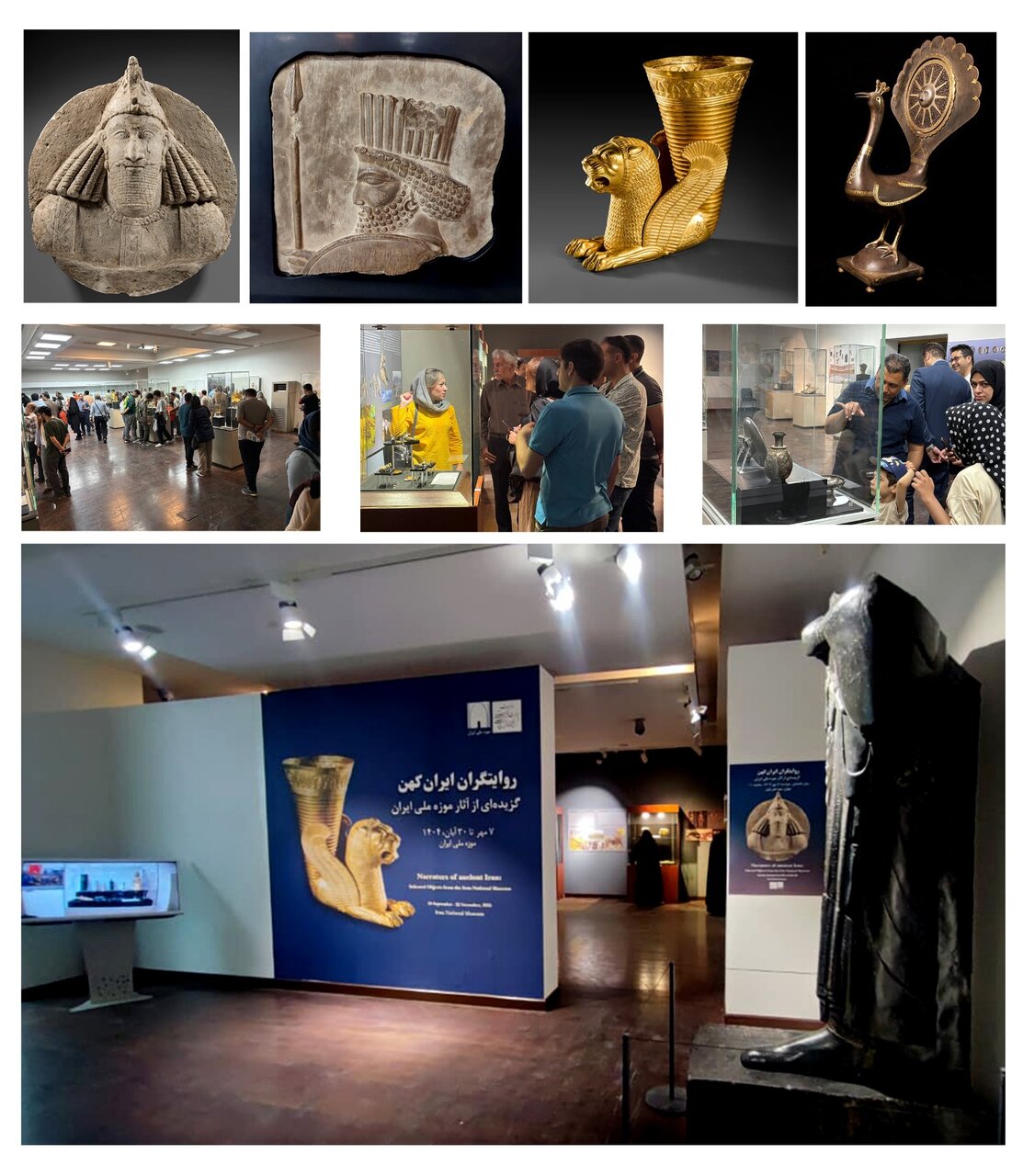‘Narrators of Ancient Iran’ on view at National Museum

TEHRAN – A new exhibition titled “Narrators of Ancient Iran: A Selection of Objects from the National Museum” has opened its doors to the public at the vast, prestigious museum, which is located in downtown Tehran.
The opening ceremony was attended by Ali Darabi, Deputy Minister for Cultural Heritage, Jebrael Nokandeh, Director General of the National Museum, and other officials, experts, and enthusiasts on September 29.
It features more than 330 objects from nearly 80 ancient sites, providing an overview of Iranian history from the earliest evidence of human settlement to recent centuries.
According to Nokandeh, the exhibit, which will run until November 22, is one of the largest ever held by the museum in terms of the number of objects displayed.
Regarding the exhibited collection, he stated: "The exhibition includes a selection of less-seen objects from the repository of the National Museum of Iran, objects on display from the Museum of Ancient Iran and the Museum of Islamic Archaeology and Art of Iran, as well as a selection of artifacts recently exhibited in the 'Glory of Ancient Persia' exhibitions in museums in Beijing, Shanghai, and Xinjiang."
According to Nokandeh, the exhibition includes three main galleries dealing with the evolution of technology, art, society, and culture on the Iranian Plateau.
The first gallery of the exhibition is dedicated to Iran's prehistory, specifically the Paleolithic, Neolithic, and Chalcolithic periods. Important sites from which objects are displayed include Wezmeh Cave, Abdul Hosein, and Sang-e Chakhmaq. The Director General added: "Visitors can see the bone flute from Sang-e Chakhmaq, which is currently the oldest known musical instrument in Iran."
Regarding the Historical Periods gallery, he said: "This gallery, which is the largest space in the exhibition, is dedicated to the Bronze and Iron Ages, Elamite, Achaemenid, Seleucid, Parthian, and Sasanian periods." Notable works in this gallery include Bronze Age artifacts from Shahr-e Sukhteh, Shahdad, and Jiroft in southeastern Iran. From the Iron Age, prominent works from sites such as Marlik, Hasanlu, Qalaichi, and Lorestan are displayed, including the golden bowls of Hasanlu and Marlik, which are among the prominent artistic works of this period in the National Museum of Iran. Artifacts from the Elamite and Median civilizations are other features of this gallery. Nokandeh, regarding the Elamite works, stated that alongside known Elamite objects like the Joubaji collection, the second guardian bull statue from Chogha Zanbil is also on display. He continued, noting that prominent Achaemenid, Seleucid, Parthian, and Sasanian works are other sections of this gallery.
The third gallery of the exhibition is dedicated to artifacs from the Islamic era in Iran. This gallery consists of two sections, displaying a selection of Iran's rich heritage from the Islamic period in the fields of calligraphy, metalworking, and the textile. The first section of this gallery contains outstanding works from the early centuries to the Qajar period, including a Quran written in Muhaqqaq script from the Ilkhanid period dated 704 AH (1305 CE), the manuscript of "Masalik va Mamalik," Ilkhanid mihrab tiles, an astrolabe, and a celestial globe from the Seljuk period.
He continued: "The second section of the gallery is dedicated to displaying exquisite Safavid-era textiles, showcasing a brilliant example of Iranian textile art." This section features works such as silk brocade (Zarbaft) with delicate Gol-o-Morgh (flower and bird) patterns, satin fabrics with golden backgrounds, and brocaded borders (Zari), all woven in the workshops of Isfahan, the art-loving capital of the Safavids. These precious textiles, created with astonishing delicacy using silk and golden threads, bear witness to the splendor and artistic taste of the Safavid court and textile industry.
A photo exhibition showcasing the activities of the National Museum of Iran during the 12-day war is another section on display in the side gallery. Also featured are replicas of two artifacts: a statue of Darius the Great from Susa and a model of the Tarikhaneh Mosque in Damghan. It is worth noting that the mentioned mosque model was built in the 1930s.
The "Narrators of Ancient Iran" exhibition is open from Saturday to Wednesday, from 9:00 AM to 5:00 PM, and on Thursdays and Fridays from 9:00 AM to 6:00 PM.
AM
